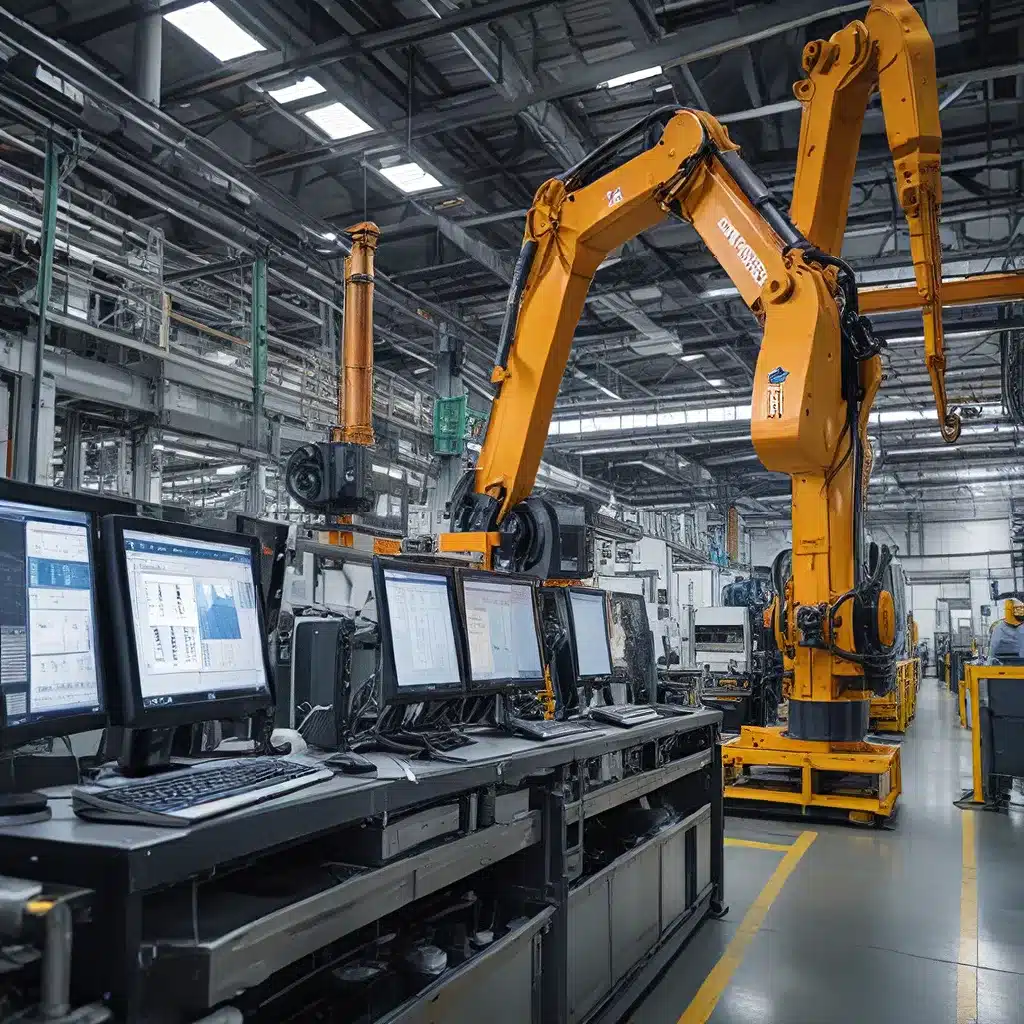
The Rise of Industry 4.0 and the IoT Revolution
The manufacturing industry is undergoing a profound transformation, driven by the emergence of Industry 4.0 and the Internet of Things (IoT). These technologies are reshaping traditional manufacturing paradigms, ushering in a new era of increased efficiency, enhanced product quality, and improved sustainability. At the heart of this revolution are sensor networks and the data-driven insights they enable.
Sensor networks are the backbone of Industry 4.0, providing the critical link between the physical and digital realms. By strategically deploying a network of sensors throughout the manufacturing environment, organizations can gather a wealth of real-time data on various aspects of their operations. From monitoring machine performance and detecting anomalies to tracking energy consumption and ensuring product quality, these sensor-driven insights are empowering manufacturers to make more informed, data-driven decisions.
Sensor networks are the foundation for predictive analytics, a powerful tool that allows manufacturers to anticipate and address issues before they occur. By analyzing sensor data, algorithms can identify patterns, predict equipment failures, and optimize processes, enabling proactive maintenance and minimizing unplanned downtime.
Improving Efficiency and Productivity through Sensor-Driven Insights
One of the primary benefits of integrating sensor networks into manufacturing operations is the ability to enhance efficiency and productivity. By monitoring the performance of machinery, sensors can detect early signs of wear and tear, trigger preventive maintenance, and ensure optimal operating conditions. This not only reduces the likelihood of unexpected breakdowns but also extends the lifespan of equipment, ultimately lowering maintenance costs and improving overall equipment effectiveness (OEE).
Moreover, sensor data can provide valuable insights into the utilization of resources, such as energy and raw materials. Smart metering and sub-metering technologies, combined with advanced analytics, enable manufacturers to identify opportunities for reducing consumption and optimizing resource allocation. This data-driven approach to resource management supports sustainability initiatives and helps organizations reduce their environmental impact.
Embracing IoT also enhances productivity by automating various processes and enabling real-time decision-making. Predictive maintenance strategies, facilitated by sensor data and advanced analytics, can anticipate equipment failures and schedule maintenance activities accordingly, minimizing downtime and maximizing operational efficiency.
Enhancing Product Quality and Workplace Safety
Sensor networks play a crucial role in ensuring product quality and workplace safety in manufacturing environments. By monitoring critical parameters such as temperature, pressure, vibration, and material properties, sensors can detect deviations from established quality standards and trigger immediate interventions.
This real-time quality control enables manufacturers to identify and address issues early in the production process, reducing waste, improving yield, and delivering consistently high-quality products. Furthermore, sensor-based monitoring of environmental conditions, such as air quality and safety hazards, can help create a safer work environment for employees, contributing to overall workplace well-being.
Strengthening Supply Chain Transparency and Efficiency
The integration of sensor networks extends beyond the factory walls, providing supply chain visibility and enhancing overall efficiency. Blockchain technology, for instance, can be combined with sensor data to create a secure, transparent, and tamper-resistant record of supply chain transactions, enabling better traceability and accountability.
Moreover, 5G technology supports the real-time processing and exchange of sensor data, enabling advanced applications like predictive maintenance and digital twins. These technologies optimize operations, reduce downtime, and improve overall supply chain responsiveness.
Embracing the Power of Digital Twins and the Metaverse
The advent of digital twins and the metaverse further amplifies the impact of sensor-driven insights in the manufacturing industry. Digital twins are virtual representations of physical assets, processes, or entire production facilities, created using sensor data and advanced simulations.
By leveraging digital twins, manufacturers can optimize operations, test new processes, and simulate potential scenarios without disrupting the actual production environment. This approach enables faster decision-making, reduces the risk of costly mistakes, and supports continuous improvement initiatives.
The metaverse, a convergence of virtual and physical worlds, offers new opportunities for manufacturers to collaborate, design, and even simulate production processes in a immersive, 3D environment. This transformative technology can enhance remote collaboration, facilitate virtual training, and enable more efficient product development cycles.
Securing the IoT-Enabled Manufacturing Ecosystem
As the manufacturing industry becomes increasingly interconnected and data-driven, the need for robust security measures becomes paramount. Sensor networks and IoT devices can be vulnerable to cyber threats, which can compromise data integrity, disrupt operations, and even pose safety risks.
Manufacturers must adopt a multilayered approach to IoT security, which may include measures such as encryption, access controls, and threat detection systems. Collaboration with cybersecurity experts and the implementation of industry-specific security protocols can help organizations mitigate the risks associated with the IoT-enabled manufacturing ecosystem.
Managing Energy Efficiency and Sustainability
Sensor networks and data analytics play a crucial role in enhancing energy efficiency and sustainability in the manufacturing sector. Smart metering and sub-metering technologies provide granular insights into energy consumption patterns, enabling manufacturers to identify opportunities for optimization and reduction.
By integrating sensor data with advanced analytics, organizations can implement intelligent energy management strategies, such as load balancing, peak demand reduction, and renewable energy integration. This data-driven approach supports sustainability initiatives and helps manufacturers align with evolving environmental regulations and corporate social responsibility (CSR) goals.
Conclusion: Embracing the Sensor-Driven Future of Manufacturing
The integration of sensor networks and IoT technologies is transforming the manufacturing industry, ushering in a new era of increased efficiency, enhanced product quality, and improved sustainability. By leveraging sensor-driven insights and predictive analytics, manufacturers can make more informed decisions, optimize their operations, and stay ahead of the competition.
As the manufacturing landscape continues to evolve, embracing the sensor-driven future will be crucial for organizations seeking to thrive in the digital age. By investing in the right technologies, fostering a culture of data-driven decision-making, and addressing the challenges of security and energy management, manufacturers can unlock the full potential of the IoT revolution and secure their position as leaders in the Industry 4.0 landscape.